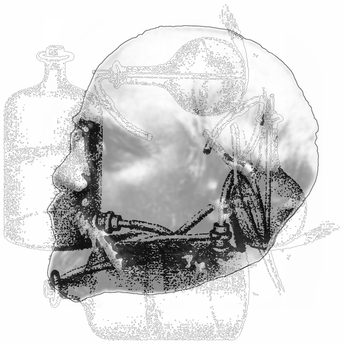Magnus Blix1849–1904
Cutaneous sensory “spots” specifically responsive to touch (pressure) and pain, as well as warmth and cold, were isolated later in the 19th century, using more sensitive and specific apparatus. A division of the skin senses into three separate systems (one to register temperature, a second for pressure, and a third for touch) was proposed by Ludwig Natanson (1822-1871). He supported the contention of peripheral independence by describing how these systems succumb in sequence when a limb “falls asleep”. Three sets of independent studies were reported in the 1880s by Blix, Alfred Goldscheider (1858-1935) and Henry Donaldson (1857-1938), and they are jointly credited with the discovery. All were principally concerned with establishing cold and warm spots. Blix continued in the tradition of applying low intensity electric currents to the skin, and he found separate warm and cold spots. Goldscheider stimulated the skin with a range of devices, like needles, heated brass cylinders, cooled capillary tubes, and brushes coated with ether, to isolate the cutaneous spots. Donaldson discovered the warm and cold sensory spots independently in the course of moving metal points slowly over the skin. Ritter’s observations, made at the beginning of the century, faded into oblivion with the discovery of specific receptors in the skin. This provided the platform for Blix and others to relate structure to function. Perhaps it was the equation of cutaneous sensations with the underlying nerves that has given authority to Blix; he stated “The different sensations of cold and warmth are produced by stimulation of separate specific nerve end-organs in the skin”. In the context of sensory physiology Blix had clearly defined a path that would be followed by others. Indeed, he was seen as the originator of this approach and one later authority stated: “Since the discovery by Blix of cold and warm spots from which adequate or electrical stimuli elicited cold and warm sensations, respectively, numerous authors have described the distribution of cold and warm spots in the skin”. Blix is shown together with some of his instruments for measuring sensitivity to temperature.
